#arctotherium
Text
National Fossil: Argentina
For “season 2“ we‘re moving to South America, more precisely to Argentina, which has lots of fossils to offer.
Once again, you get to vote on which one should represent the nation. As always, it could be a fossil that is just exceptionally well preserved and beautiful, had a huge impact on paleontology and our knowledge of the past, is very common/representative of the area, is beloved and famous in the public eye, is just a very unique and interesting find, or has any other justification.
Here are the options:
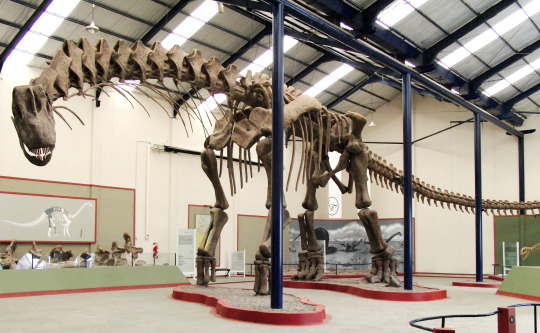
Argentinosaurus: The first contestant is one of the biggest land animals of all time with a length of more than 30 m and a weight of 80 t or more. It‘s also very fittingly named after the country.
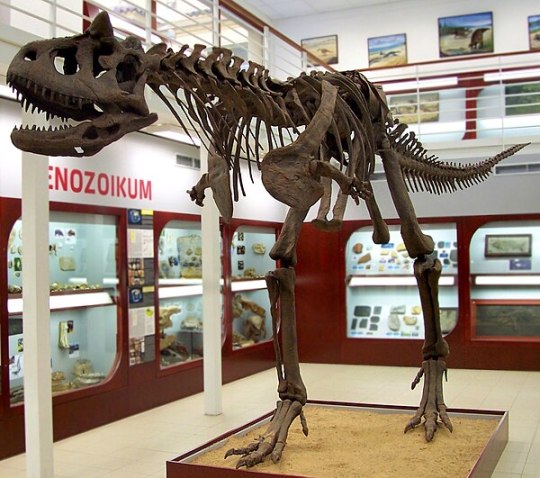
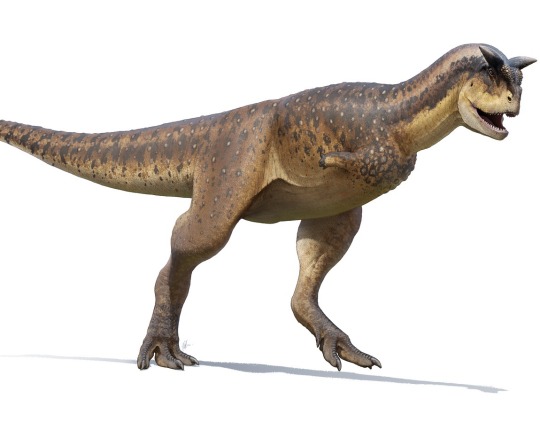
Carnotaurus: Next up is the carnivorous dinosaur Carnotaurus. Only one skeleton has ever been found, but it was so well preserved, that Carnotaurus still is one of the best understood theropod dinosaurs of the Southern hemisphere. It‘s a fan favorite movie star, with roles ranging from the dorky dancer of Prehistoric Planet all the way to the main villain of Dinsey‘s Dinosaur (Art by Fred Wierum)
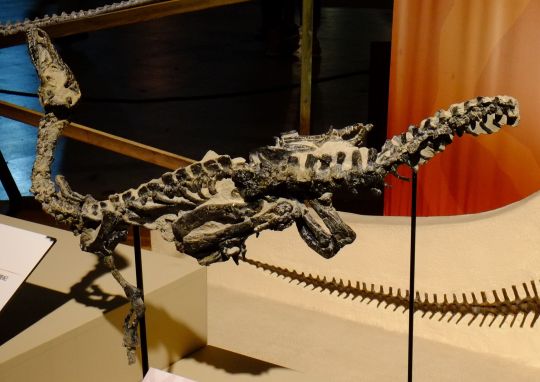
Eoraptor: while Argentina has some of the biggest dinosaurs ever to offer, it is also well known for some of the earliest ones. The small Triassic Eoraptor and some of its Argentinian cousins are very important for our understanding of the evolution of dinosaurs as a whole

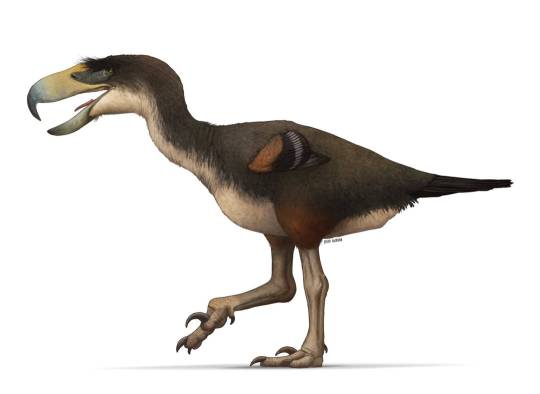
Kelenken: One of my favorite groups of South American animals are the terror birds, giant predatory flightless birds that make it very clear that birds are in fact dinosaurs. The biggest one of them was 3 m tall Kelenken, known from some leg bones and the skull. It lived during the Miocene about 15 million years ago (Art by Julio Lacerda)

Argentavis: If one giant Miocene bird is not enough for you, Argentina also offers you Argentavis. While it maybe wasn‘t the biggest flying bird in terms of wingspan, it most likely was the heaviest one (more than 70 kg; for comparison, the heaviest flying bird today weighs about 20 kg) (Art by Fabio Alejandro)

Fasolasuchus: If you‘re really not a fan of dinosaurs (including birds), maybe I can interest you in the crocodile-site of the Archosaur family tree: Fasolasuchus was an distantly-related triassic cousin of our modern crocodiles and it was the biggest terrestrial predator of its time; the only carnivores to ever surpass it were the biggest theropod dinosaurs
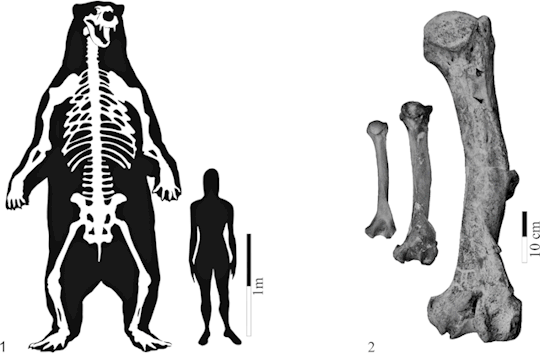
Arctotherium: South America is home to many bizarre mammals, but most of them I want to reserve for other countries. Still, here is one mammal option for y‘all: Arctotherium, the giant short-faced bear. The biggest species of them lived in Argentina and they were probably the biggest bear ever (maybe up to 1500 kg and more). (Illustration by Soibelzon, Schubert 2011)
#paleontology#paleoblr#fossils#argentinosaurus#carnotaurus#terror bird#argentavis#fasolasuchus#arctotherium
49 notes
·
View notes
Text
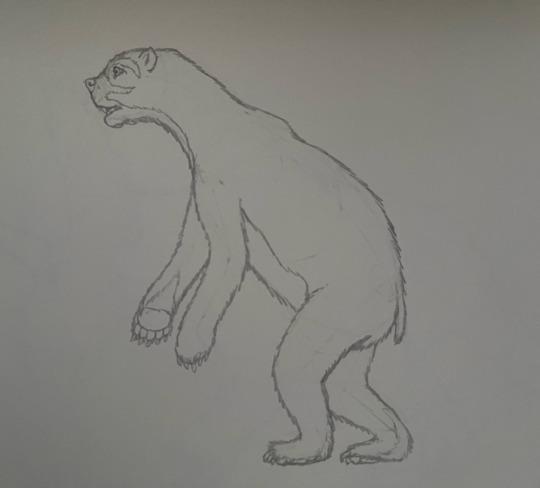
Arctotherium angustidens was a short-faced tremarctine bear from the Pleistocene of South America. Upper limits for this species of giant bear may have topped out at a height of 14 ft. and a weight approaching 2 tons, making it the largest known bear and a contender for largest land mammal carnivore ever. Its lineage has since suffered a substantial decrease in diversity, today only being survived by the spectacled bear (Tremarctos ornatus).
5 notes
·
View notes
Text
Discover the Largest Bear to Ever Exist (Up to 4X The Size of a Grizzly!) - AZ Animals
....and I thought I was a Big Bear! lol 😆
#arctotherium angustidens#bear#bears#south american bears#largest bear to have ever lived#titusville#spacecoast#florida#brevardcounty#centralflorida
1 note
·
View note
Text

Arctotherium wingei.
One of the smaller species in the Arctotherium genus, and one of the more herbivorous species.
7 notes
·
View notes
Text
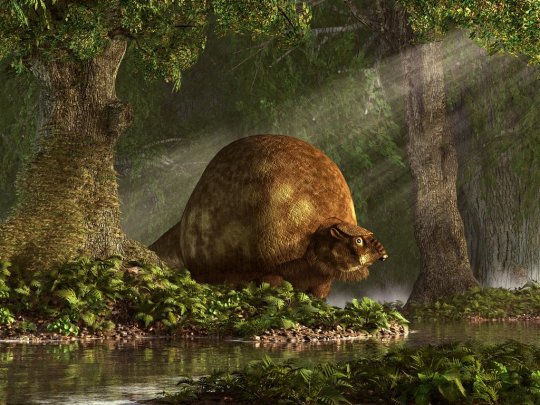

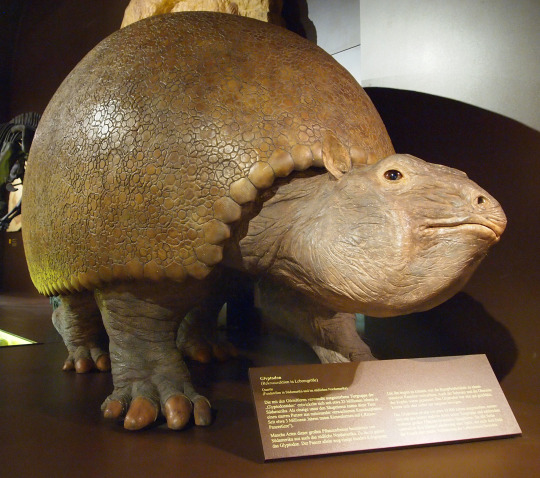

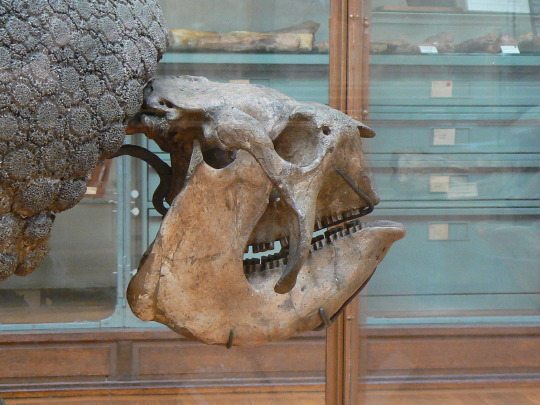
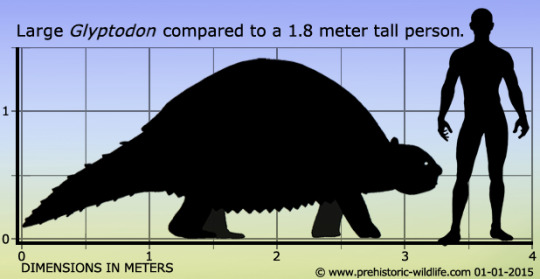
Glyptodon
(temporal range: 3.200-0.011 mio. years ago)
[text from the Wikipedia article, see also link above]
Glyptodon (from Greek for "grooved or carved tooth": γλυπτός "sculptured" and ὀδοντ-, ὀδούς "tooth")[1] is a genus of glyptodont (an extinct group of large, herbivorous armadillos) that lived from the Pliocene, around 3.2 million years ago,[2] to the early Holocene, around 11,000 years ago, in Brazil, Uruguay, Paraguay, Bolivia, Peru, Argentina, and Colombia. It is one of, if not the, best known genus of glyptodont. Glyptodon has a long and storied past, being the first named extinct cingulate and the type genus of the glyptodonts. Fossils of Glyptodon have been recorded as early as 1814 from Pleistocene aged deposits from Uruguay, though many were incorrectly referred to the ground sloth Megatherium by early paleontologists.
The type species, G. clavipes, was described in 1839 by notable British paleontologist Sir Richard Owen. Later in the 19th century, dozens of complete skeletons were unearthed from localities and described by paleontologists such as Florentino Ameghino and Hermann Burmeister. During this era, many species of Glyptodon were dubbed, some of them based on fragmentary or isolated remains. Fossils from North America were also assigned to Glyptodon, but all of them have since been placed in the closely related genus Glyptotherium. It was not until the later end of the 1900s and 21st century that full review of the genus came about, restricting Glyptodon to just five species under one genus.
Glyptodonts were typically large, quadrapedral (four-legged), herbivorous armadillos with armored carapaces (top shell) that were made of hundreds of interconnected osteoderms (structures in dermis composed of bone). Other pieces of armor covered the tails and skull roofs, the skull being tall with hypsodont (high-crowned) teeth. As for the postcranial anatomy, pelves fused to the carapace, an amalgamate vertebral column, short limbs, and small digits are found in glyptodonts. Glyptodon reached up to 2 meters (6.56 feet) long and 400 kilograms (880 pounds) in weight, making it one of the largest glyptodonts but not as large as its close relative Glyptotherium or Doedicurus, the largest known glyptodont. Glyptodon is morphologically and phylogenetically most similar to Glyptotherium, however they differ in several ways. Glyptodon is larger on average, with an elongated carapace, a relatively shorter tail, and a robust zygoma, or cheek bone.
Glyptodonts existed for millions of years, though Glyptodon itself was one its last surviving members. Glyptodon was one of many South American megafauna, with many native groups such as notoungulates and ground sloths reaching immense sizes. Glyptodon had a mixed diet of grasses and other plants, instead living at the edge forests and grasslands where the shrubbery was lower. Glyptodon had a wide muzzle, an adaptation for bulk feeding. The armor could have protected the animal from predators, of which many coexisted with Glyptodon, including the "saber-tooth cat" Smilodon, the large dog relative Protocyon, and the giant bear Arctotherium.
7 notes
·
View notes
Photo

“Knockout” (2002) by Mark Hallett
I saved the best for last. This seems like the mammalian “sequel” to Thunder Across the Delta. A Columbian mammoth (Mammuthus columbi) beats the living daylights out of a short-faced bear (Arctotherium simum).
(X) (X)
22 notes
·
View notes
Note
So. Cats are the ultimate solo predators. They can be big or small, come in all sizes and pretty much found everywhere. Is there any natural limit to cat sizes? Like is there research on why tiger is the largest cat and why they don't get larger? Also, it would be funny if there was a carnivore feline that was a microcat. Size of a mouse, eats incest or whatever
I'd say there's a limit. Mammalian land predators have rarely ever exceeded a tonne. Possibly the largest mammalian land predator of all time was the extinct bear Arctotherium angustidens- the largest males could weigh up to 1200 kg. For comparison, the largest extant mammalian land predator is the polar bear- the high end of the weight range for males is 700 kg. This is still nothing compared to the largest herbivores, though! The largest extant mammalian herbivore is the African elephant, which weighs anywhere between a whopping five and ten tonnes. The largest land animals of all time were herbivorous sauropod dinosaurs.
The larger an animal is, the more food intake it requires- for herbivores, this is fine, because vegetation is everywhere and large size is an advantage for deterring predators. Adult elephants and rhinoceroses basically have no natural predators due to their size.
Carnivores, on the other hand, have to expend energy to hunt down prey. Being too large is inefficient- larger animals are slower and have to resort to ambush hunting. Big cats actually have relatively low hunting success rates and the only reason this works out is because they evolved to consume large prey- lions and tigers can sustain themselves on a medium-to-large kill per week by eating up to a quarter of their own weight in meat in one sitting. There's not really any evolutionary pressures for big cats to be any significantly bigger, they're efficient predators as-is.
6 notes
·
View notes
Text
Toonami Weekly Recap 08/06/2022
Yashahime: The Second Act EP#26 (02) - Demon Spirit of the Sea: While Setsuna goes to retrieve the root, Moroha asks Jy?bei about Bokuseno, by finding a demon with wisdom and mystical abilities. Moroha and Setsuna find it, but are ambushed by the snake-demon spirit disguised as a human nun, who desires Setsuna to appease her actions about not restoring her true form. Towa arrives in time to aid a group of demon-slayers, wearing a pair of mirrored sunglasses to protect everyone from turning into petrified statues. It is that Setsuna realizes she can put an end to all of this suffering. She utilizes her weapon's ability to cut any discovered immaterial beings, in order to restore the destiny of the snake-demon and that of her human love, a fisherman. The Snake-Demon peacefully regains her true form and returns to the sea. While the girls leave the beach, Riku learns that Towa would wield a genuine weapon empowered with immense demonic energy.
Primal Season 2 EP#04 (14) - The Red Mist: Viking warriors and their Arctotheriums emerge from the mist. Mira and her people are forced to bow, angering Spear. He and Fang battle the warriors while Mira and her people flee into the forest. The duo are overwhelmed by the warriors, with Fang being critically wounded by a female warrior, Rikka, while Spear accidentally kills an attacking child, Rikka's son. The pair give into their rage and kill Rikka and the remainder of the warrior clan under the cover of a red mist before they escape with Mira using a stolen boat. Sometime later, another boat arrives carrying the Viking chieftain, Eldar, his eldest son, and a small group of slaves. After discovering the massacre, they become devastated over the loss of their clan and Eldar's wife Rikka and youngest son. They soon bury their clan members, free the slaves, and give their deceased family a ceremonial ship funeral. Seeing revenge, they then set sail to hunt down the ones responsible for the destruction of their village.
Lupin the 3rd Part 6 EP#15 - Wedding Bells Ring with the Sound of Gunfire: Lupin reveals to Jigen their next heist is to steal the "Tear of Marseille", a jewel whose existence was only recently revealed on the internet. It is to be given to Mylene Legrand, a local town doctor and the bride-to-be of Count Fernand Maistre. Jigen asks Lupin to pass on the heist, as sometime ago she had saved his life after finding him shot in an alley. They were immediately attracted to each other, but Jigen eventually left her behind because of his chosen lifestyle. In the lead-up to the wedding, Jigen sees a man that Lupin recognizes as the Jackal who specializes in kidnapping and ransom, and suspects that he is targeting Mylene. Jigen secretly watches over her, eventually locating and killing the Jackal's crew, including the Jakal's brother Jed, but the Jackal escapes. On the day of the wedding, Jigen provides encouragement to Fernand, and kills Jackal when he attempts to kill Mylene in revenge for his brother's death. Mylene later meets up with Lupin and reveals that she leaked the information about the Tear of Marseille, hoping to see Jigen one more time before getting married as she still cares for him. She gives Lupin the Tear as payment which he later gives to Jigen, only to have him throw it into the ocean.
#Toonami#Toonami Weekly Recap#Yashahime: Princess Half Demon#Yashahime: The Second Act#InuYasha#Primal#Primal 2#Lupin the 3rd#Lupin the 3rd Part 6#Witch and Gentleman#august 7 2022
2 notes
·
View notes
Text
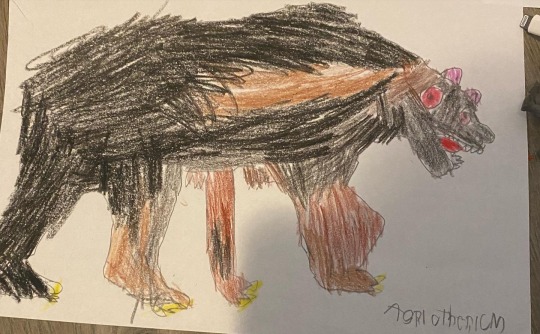
This is my drawing of a arctotherium
2 notes
·
View notes
Link
6 notes
·
View notes
Photo

This is Donovan Oliver here, and today I’m counting down my picks for the Top 20 Brutal Fights from Primal. For this list, I’ve selected the action and survival battles that feature blood and gore that the Russian Animator Genndy Tartakovsky has created. If you haven’t been caught up with the episodes, beware of spoilers. Get ready for the rumble of the battle. And if you got a favorite Dino death in the show, let me know in the comments, but please keep it PG rated. 20. Spear and Fang vs Mammoth Herd (A Cold Death) 19. Spear, and Fang vs Snakes (River of Snakes) 18. Spear, and Fang vs Raptors (Terror Under the Blood Moon) 17. Spear, and Fang vs The Infected Argentinosaurus (Plague of Madness) 16. Spear, and Fang vs Man Bats (Terror Under the Blood Moon) 15. Lula vs The Head Witch (Coven of the Damned) 14. Spear, and Fang vs The Night Feeder (The Night Feeder) 13. Spear, and Fang vs Mega Spider (Terror Under the Blood Moon) 12. Spear, and Fang vs Megalodon (Sea of Despair) 11. Spear, Celtic Tribe, and Fang vs Red (Shadow of Fate) 10. Spear, and Fang vs Vikings on Arctotherium (Dawn of Man) 9. Charles vs Brutish Madman (The Primal Theory) 8. Spear, Fang, and Mira vs The Chieftan and Eldar (Vidarr) 7. Spear, and Fang vs Vikings (The Red Mist) 6. Spear, and Fang vs Wild Dogs (Scent of Prey) 5. Spear, and Fang vs Liopleurodon (Slave of the Scorpion) 4. Spear, and Fang vs Babylonian (The Colossaeus, Part 1) 3. Spear, and Fang vs Tyrannosauruses (Spear and Fang) 2. Spear, Mira, and Fang vs Egyptian Warriors (The Colossaeus, Part 1) 1. Spear vs Krog (Rage of the Ape-Men) https://www.instagram.com/p/ChyKDv4Ok27/?igshid=NGJjMDIxMWI=
0 notes
Text
out of knowing and into unknowing.
as the biotic interchange. as the arctotherium cross. receiving. accepting. perishing.
as once the seas fell >> the grass climbed << the land sprang on wobbly legs. the deer will feast with opportunism on a land so strange.
knowing nothing but the water and the earth. raising their heads to pluck the fruit of trees most curious.
recieved as both guest and host. to perish.
1 note
·
View note
Photo
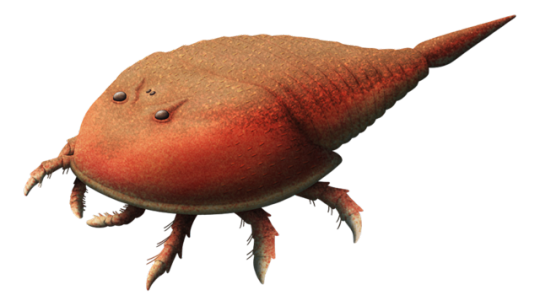


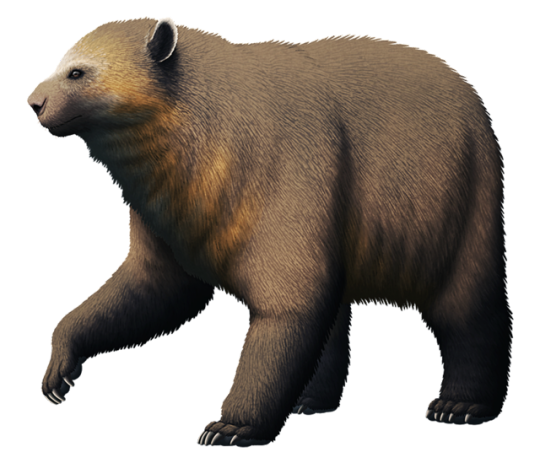
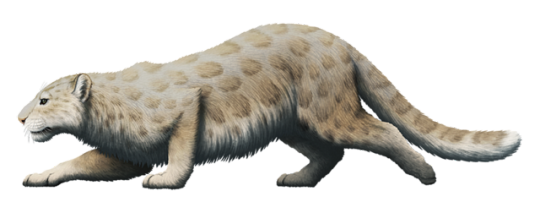
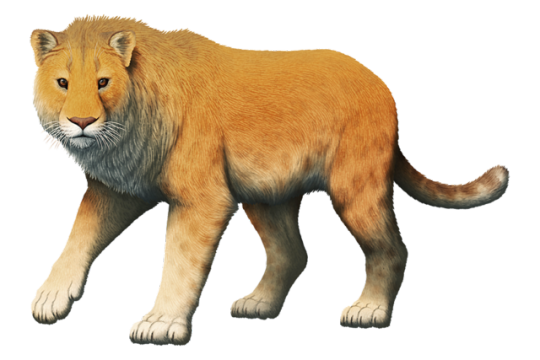
Some more recent work I’ve done for PBS Eons!
The eurypterids Hibbertopterus and Brachyopterus, from “When Giant Scorpions Swarmed the Seas”
https://www.youtube.com/watch?v=1sQXTXbuLYo
The short-faced bears Plionarctos and Arctotherium, from “The Mystery Behind the Biggest Bears of All Time”
https://www.youtube.com/watch?v=KtsOhmBb92E
The big cats Panthera blytheae and Panthera atrox, from “The Ghostly Origins of the Big Cats”
https://www.youtube.com/watch?v=oPJnqWke5n8
---------
Tumblr | Pillowfort | Twitter | Patreon
#science illustration#paleontology#paleoart#palaeoblr#pbs eons#eurypterid#sea scorpion#hibbertopterus#brachyopterus#short-faced bear#tremarctinae#plionarctos#arctotherium#big cat#panthera#panthera blytheae#american lion#panthera atrox#art
331 notes
·
View notes
Text

Noodling around with bears based off an old conversation I'd had with @mothwick on sasquatch.
As I am adamant that no ape would have survived through Pleistocene North America, I present my beary hairy bigfoot: a surviving member of the subfamily Tremarctinae, making it the only other living relative of the spectacled bear.
These are actually smaller offshoots of the family, being cousins to the giant short faced bears, though they do look superficially similar to members of the genus Arctodus. Much like their bigger extinct cousins, these sassy bears are opportunistic omnivores who consume a roughly 60/40 plant matter to meat diet. Their ancestors were Arctotherium bears who migrated northward and eventually adapted to dense forests of the Pacific Northwest, their deep snouts giving the illusion of an almost human face from a distance.
This bearfoot is named Chiqi. They're a sassy ton of rug.
#inkdrawing#ink sketch#ink#sasquatch#bigfoot#bear#exposition#infodump#speculative evolution#speculative biology#ursine#arctotherium#pleistocene
28 notes
·
View notes
Photo
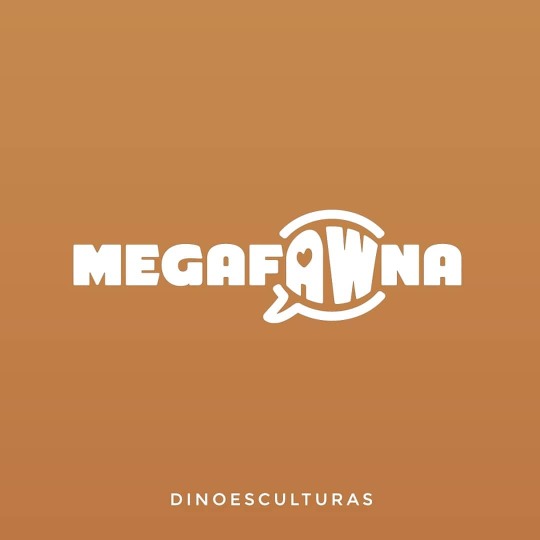
#MegafAWNa - Personajes de la Megafauna extinta de Sudamérica / Characters of the extinct South American megafauna #smilodon #macrauchenia #stegomastodon #glyptodon #arctotherium #megatherium #kelenken #toxodon https://www.instagram.com/p/CMfiaOIF2It/?igshid=zm9x7rbpovsb
0 notes
Text
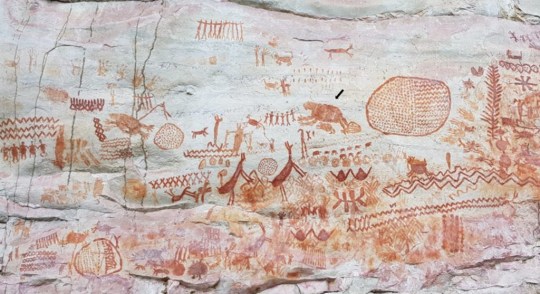
"Las Dantas panel at Cerro Azul, La Lindosa (arrow points to proposed giant sloth painting). Photo courtesy of José Iriarte."
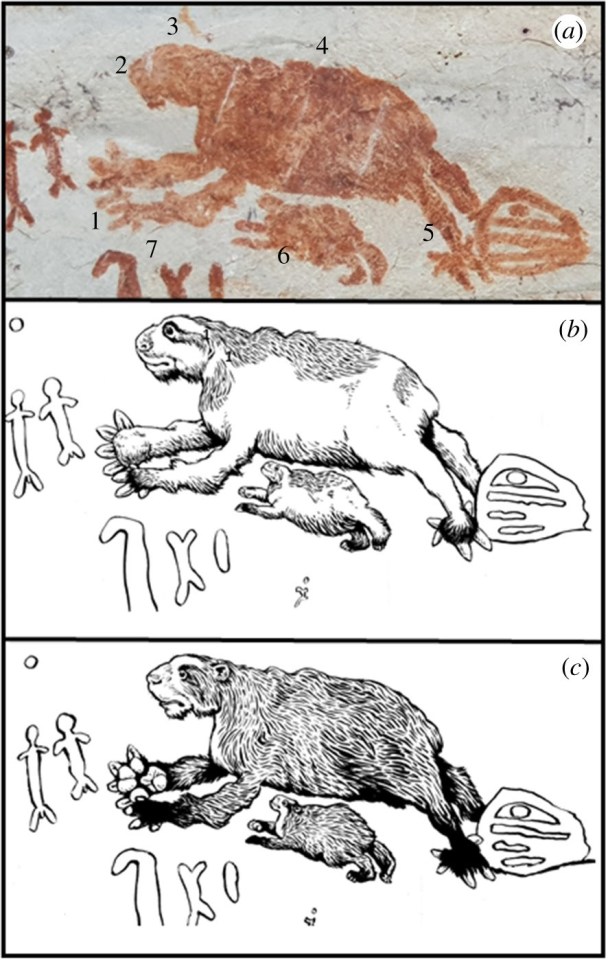
"Part of an eight-mile rock art mural at Serranía de la Lindosa in Colombiam this image may depict an extinct giant ground sloth and its offspring. Drawings by Mike Keesey offer artistic reconstructions patterned after a close living relative, the three-toed sloth, center, and an extinct bear species, Arctotherium, bottom. Photo courtesy of José Iriarte."
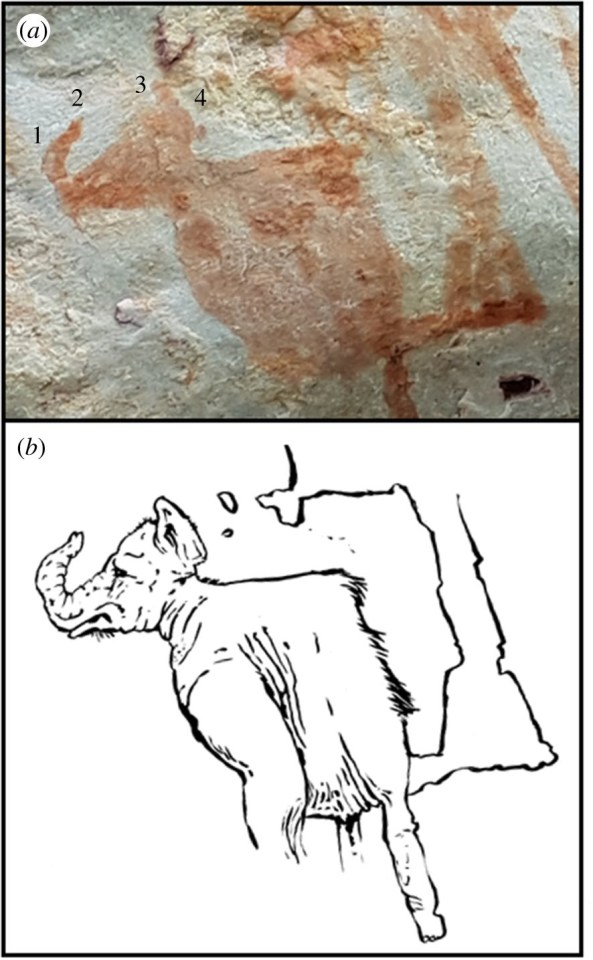
"Part of an eight-mile rock art mural at Serranía de la Lindosa in Colombia, this image may depict an extinct relative of the elephant known as the Gomphothere. A drawing by Mike Keesey offers an artistic reconstruction of the following features: 1. proboscis; 2. fingers; 3. flared ears?; 4. moderately domed head. Photo courtesy of José Iriarte."
Read the full article here
12 notes
·
View notes